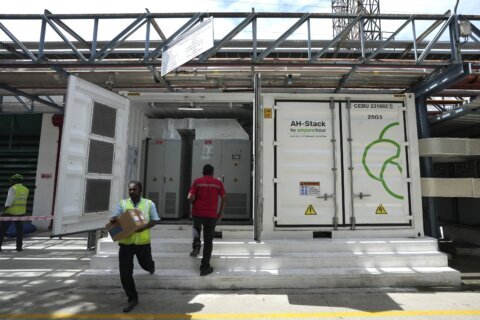U.S. government-issued Treasury bonds may have hogged the spotlight in fixed-income markets recently due to the U.S. debt ceiling crisis, but they are hardly the only choice for investors. While Treasurys offer a low risk of default thanks to their ironclad credit quality, this comes at the cost of lower yields.
In contrast, investors willing to take on greater credit risk can enjoy higher yields by investing in corporate bonds, which are fixed-income instruments issued by non-government entities.
“A corporate bond is a type of loan that companies use to borrow from investors in order to finance the company’s operations and business activities,” says Jeffrey Johnson, principal and head of fixed-income product at Vanguard. “In return for this capital, investors receive regular interest payments over a specified time period until maturity, where the borrowed money is then repaid.”
The main allure of corporate bonds is the prospect of higher yields. “Corporate bonds typically have higher return potential than a U.S. Treasury of a comparable maturity,” Johnson says. To see this dynamic play out, investors can look at credit spreads. This feature is designed to compensate investors for the higher credit risk associated with corporate bonds.
[Sign up for stock news with our Invested newsletter.]
However, corporate bonds are not risk-free investments. “The biggest risk is that the creditworthiness of a company deteriorates, prompting the market price of a bond to decline as the risk of missing a payment or default increases,” Johnson says. “The other risk, which affects all bonds, is that rising interest rates can cause a decline in their market price.”
Investors trying to trade individual corporate bond issues may also run into liquidity issues. Because corporate bonds trade over the counter, buying and selling them tends to be less transparent and more difficult compared to equities.
To mitigate liquidity issues, investors can instead buy exchange-traded funds, or ETFs, that track a diversified portfolio of different corporate bond issues and maturities. Shares of these ETFs trade on exchanges like stocks and can be easily bought and sold throughout the day.
“Corporate bond ETFs offer the advantages of low cost, diversification and liquidity relative to buying individual corporate bonds,” Johnson says. “Large index-based corporate bond ETFs tend to have expense ratios in the single or low double-basis-point range, and (using them) also alleviates the need to buy individual bonds, which are expensive to trade and limit the degree of diversification achievable.”
Here’s a look at seven of the best corporate bond ETFs to buy in 2023:
| ETF | Yield to Maturity |
| iShares Broad USD Investment Grade Corporate Bond ETF (ticker: USIG) | 5.6% |
| Vanguard Total Corporate Bond ETF (VTC) | 5.4% |
| iShares iBoxx $ Investment Grade Corporate Bond ETF (LQD) | 5.3% |
| iShares Aaa – A Rated Corporate Bond ETF (QLTA) | 5.1% |
| BlackRock Ultra Short-Term Bond ETF (ICSH) | 5.6% |
| Invesco BulletShares 2025 Corporate Bond ETF (BSCP) | 5.5% |
| SPDR Bloomberg Investment Grade Floating Rate ETF (FLRN) | 6% |
iShares Broad USD Investment Grade Corporate Bond ETF (USIG)
As its name suggests, USIG is intended to provide passively managed, broad exposure to a diversified basket of corporate bonds. To achieve this, the ETF tracks the ICE BofA US Corporate Index, which holds investment-grade bonds with maturities between one to over 20 years. Currently, this ETF has over 9,800 holdings, which investors can access for a low 0.04% expense ratio, or $4 a year per $10,000 invested.
USIG’s underlying portfolio currently sports an average duration of 6.9 years, a measure of interest rate sensitivity. All else being equal, a 100-basis-point rate hike would cause USIG to lose 6.9% in value, and vice versa if rates fell. Currently, USIG is paying out an average yield to maturity of 5.6%, which is the theoretical return an investor can expect if all of the ETF’s underlying bonds were held until maturity.
Vanguard Total Corporate Bond ETF (VTC)
A highly diversified corporate bond ETF is VTC, which uses an “ETF of ETFs” structure. That is, VTC holds three other Vanguard corporate ETFs as its underlying holdings. Currently, this consists of 38.5% in the Vanguard Short-Term Corporate Bond ETF (VCSH
), 27.3% in the Vanguard Intermediate-Term Corporate Bond ETF (VCIT), and 34.1% in the Vanguard Long-Term Corporate Bond ETF (VCLT).
By splitting its assets across these three ETFs, VTC manages to provide exposure to 7,227 investment-grade corporate bonds ranging in maturity from under one year to over 25 years. The ETF currently pays a yield to maturity of 5.4% against an average duration of 7.2 years. Like many of Vanguard’s ETFs, VTC emphasizes low fees, sporting an expense ratio of just 0.04%.
iShares iBoxx $ Investment Grade Corporate Bond ETF (LQD)
The low fees of ETFs like USIG and VTC may appeal to long-term, buy-and-hold
investors, but short-term traders have different needs. Chief among them is liquidity, which is best found in ETFs with a very tight bid-ask spread and high trading volume. A pick that satisfies both is LQD, which provides broad U.S. corporate bond exposure by tracking the Markit iBoxx USD Liquid Investment Grade Index.
As of June 22, LQD sports a 30-day median bid-ask spread of just 0.01%, with a 30-day average trading volume of around 19.5 million shares. Its portfolio of more than 2,600 bonds currently has an average duration of 8.6 years and a yield to maturity of 5.3%. For those looking for magnified exposure, LQD also offers an options chain. However, it does charge a higher 0.14% expense ratio, which works out to $14 annually on a $10,000 investment.
[SEE: 7 Best Vanguard Funds to Buy and Hold]
iShares Aaa – A Rated Corporate Bond ETF (QLTA)
“Corporations looking to issue corporate bonds often receive a credit rating from independent agencies that conduct analysis into a company’s overall creditworthiness,” Johnson says. “Corporate bonds are often grouped into broad ratings buckets, with bonds rated between AAA and BBB- called ‘investment grade’ and bonds rated below BBB- called ‘high yield.'”
Investors looking to reduce credit risk as much as possible with corporate bonds can consider QLTA. This ETF only holds the most highly rated corporate bonds out there. Its index, the Bloomberg U.S. Corporate Aaa – A Capped Index only holds bonds rated Aaa to A. Currently, QLTA has an average duration of 7.2 years and a yield to maturity of 5.1%. The ETF charges a 0.15% expense ratio.
BlackRock Ultra Short-Term Bond ETF (ICSH)
“The market price of a bond moves in the opposite direction compared to changes in interest rates,” says Evan Mann, senior high-yield analyst at Gimme Credit, a corporate bond research firm. “If rates move up or down, the market price of a bond will move down and up, respectively, in response, posing the opportunity for losses or gains if the bond is sold prior to the maturity date.”
Investors wishing to minimize the effects of interest rate movements on their corporate bond allocation may like short-duration ETFs like ICSH. This actively managed ETF is dominated by short-term corporate bonds with maturities of under one year. As a result, ICSH sports a very low average duration of 0.4 years. Thanks to the inverted yield curve, the ETF is paying a higher average yield to maturity of 5.6%.
Invesco BulletShares 2025 Corporate Bond ETF (BSCP)
“If a bond is held until its maturity date, there is no interest rate risk to principal,” Mann says. Despite temporary losses in a bond’s market price when rates rise, the face value is still guaranteed at maturity, barring the risk of default. By holding a bond until maturity, investors can ride out the negative effects of rising rates. However, most corporate bond ETFs don’t work the same way as individual bonds.
The exception is defined-maturity bond ETFs like BSCP. As one of Invesco’s “BulletShares” ETFs, BSCP is unique in that it only holds investment-grade corporate bonds maturing in 2025. In that year, BSCP will liquidate and pay out its net asset value to investors. By buying BSCP and later-dated BulletShares ETFs, investors can easily construct a corporate bond ladder. The ETF charges a 0.1% expense ratio.
SPDR Bloomberg Investment Grade Floating Rate ETF (FLRN)
Most corporate bond ETFs hold bonds that pay a fixed coupon rate, which is set when the bond is issued. When interest rates rise, the market price of these bonds falls to bring the interest paid up to par with the yields on newly issued bonds. To instead benefit from rising rates, investors can consider corporate bond ETFs that hold floating-rate bonds, with a popular option being FLRN.
This ETF holds a portfolio of U.S. and non-U.S. investment-grade bonds that pay a variable rate based on the three-month Secured Overnight Financing Rate, or SOFR. Thanks to a year of consecutive rate hikes, FLRN is currently paying out an average yield to maturity of 6%, against a very low duration of 0.03 years. The ETF charges a 0.15% expense ratio.
More from U.S. News
7 Best Dividend ETFs to Buy Now
10 of the Best Stocks to Buy for 2023
The 10 Most Valuable Companies in the World by Market Cap
7 Best ETFs to Invest in Corporate Bonds originally appeared on usnews.com
Update 06/23/23: This story was previously published at an earlier date and has been updated with new information.







